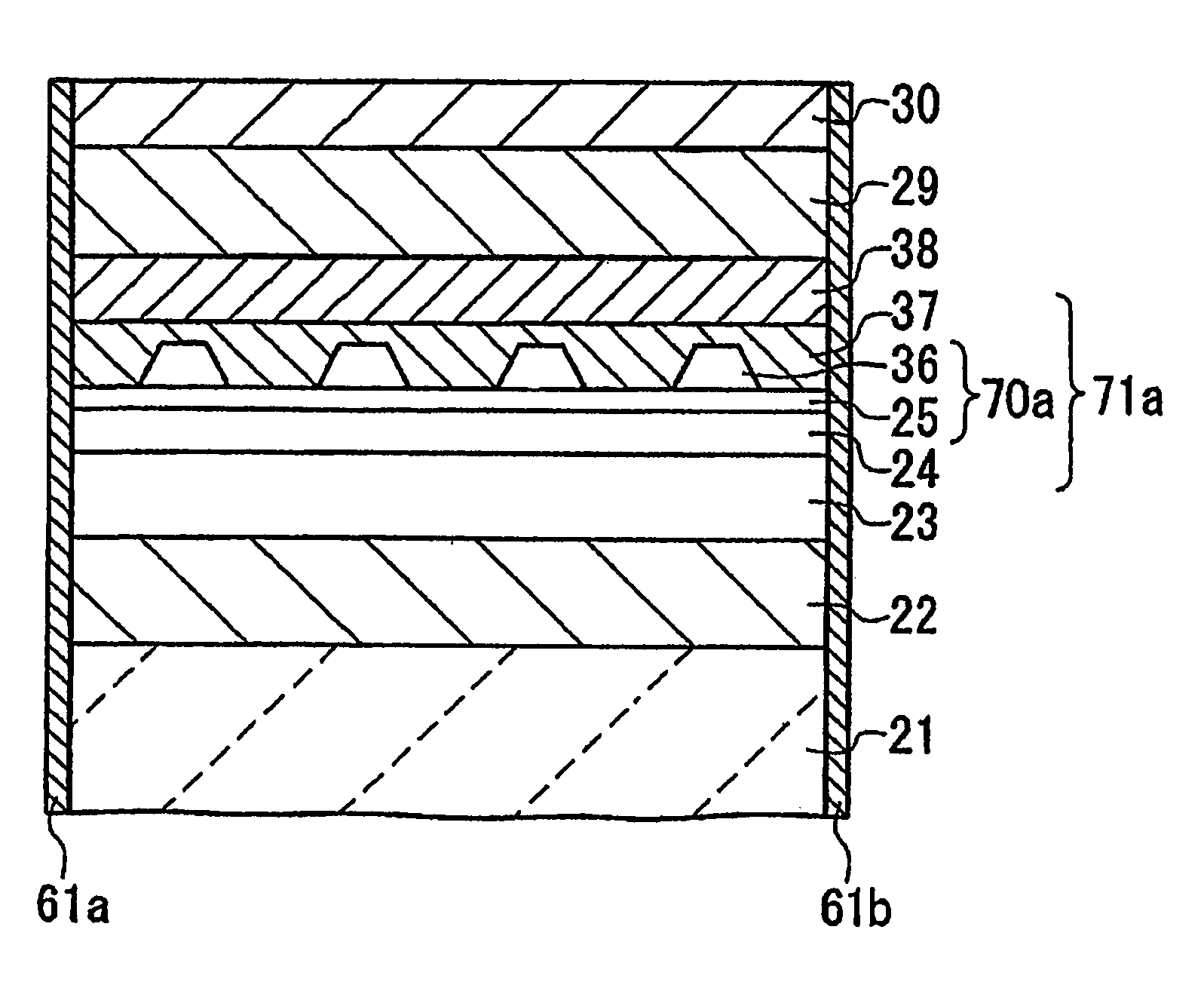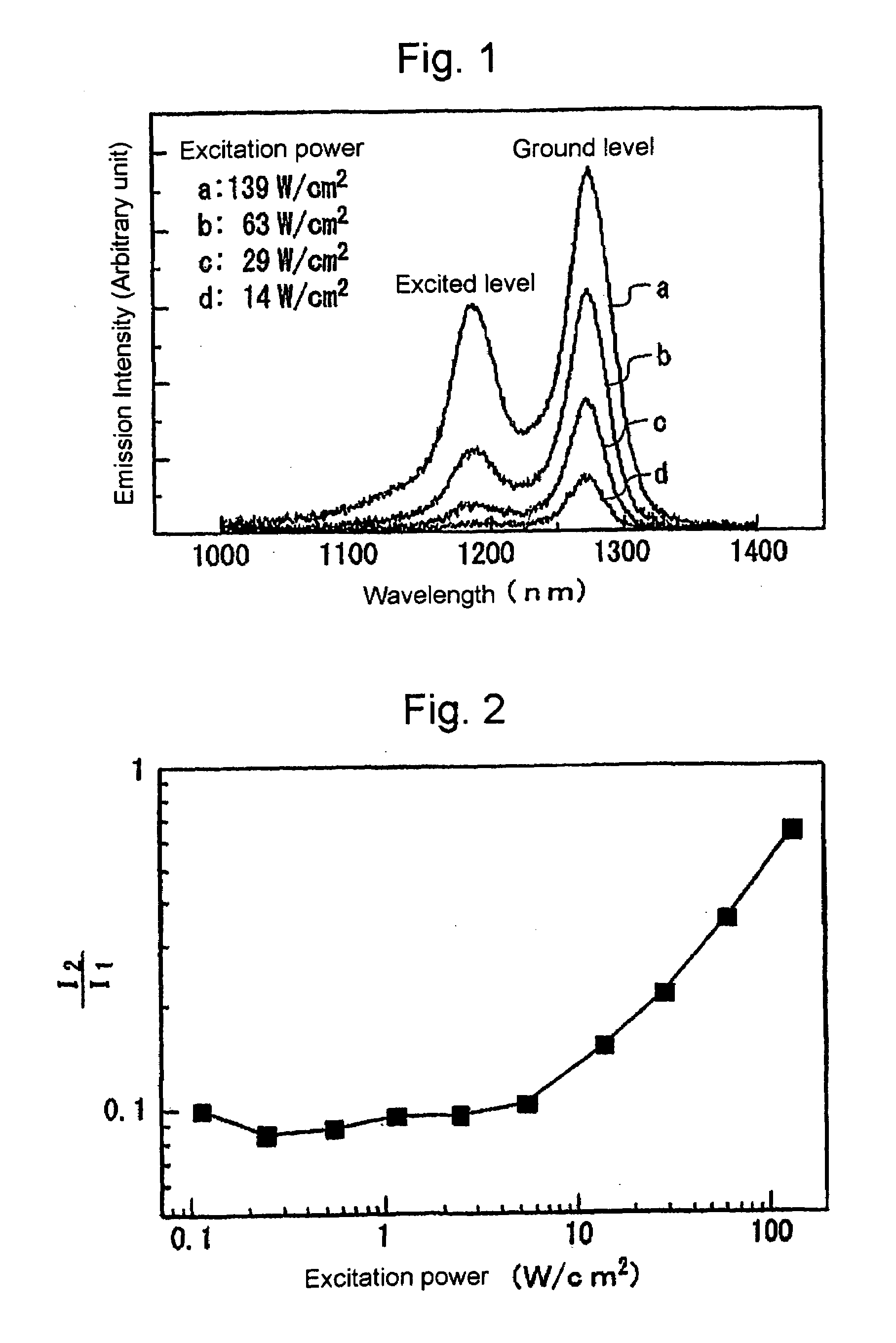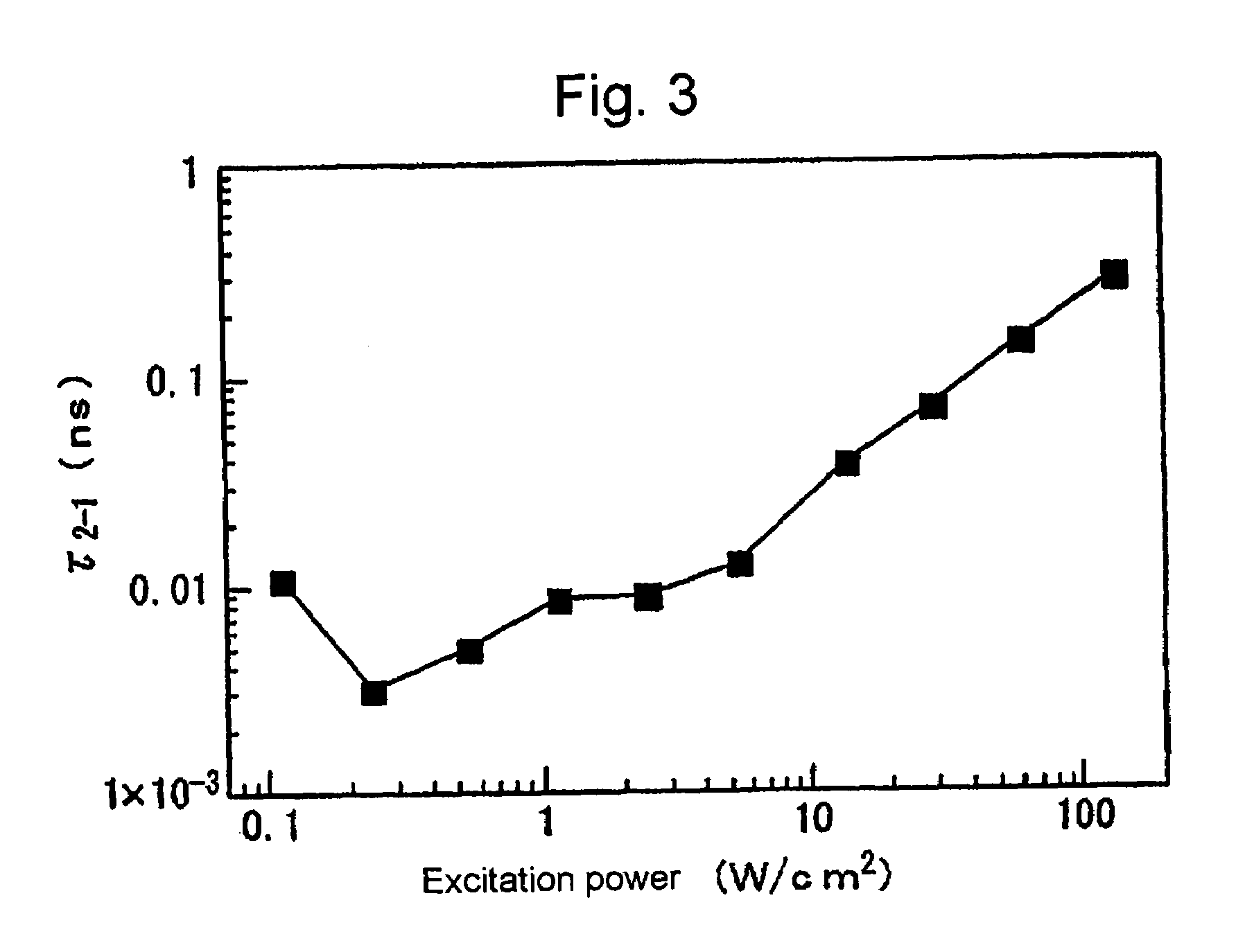Semiconductor quantum dot device
a quantum dot and semiconductor technology, applied in semiconductor devices, lasers, semiconductor lasers, etc., can solve the problems of reducing light emission efficiency, quantum dot lasers with operating speed exceeding that of semiconductor lasers, and structure or quantum well structure has not yet been proposed, so as to suppress the increase in the relaxation time of carriers
- Summary
- Abstract
- Description
- Claims
- Application Information
AI Technical Summary
Benefits of technology
Problems solved by technology
Method used
Image
Examples
examples
[0088]Explanation next regards examples of the present invention with reference to the accompanying drawing.
first example
[0089]FIG. 8 shows the construction of a first example of a quantum dot laser in which the semiconductor quantum dot device of the present invention has been applied.
[0090]The quantum dot laser shown in FIG. 8 was fabricated by the following procedure which used an MBE (Molecular Beam Epitaxy) apparatus.
[0091]First, n-type AlGaAs cladding layer 22 (aluminum composition of 0.3, thickness of 3 μm, and carrier concentration of 1×1018 cm−3), undoped GaAs optical confinement layer 23 (thickness of 0.15 μm), and undoped GaAs barrier layer 24 (thickness of 20 nm) are successively grown on n-type GaAs substrate 21.
[0092]The temperature of GaAs substrate 21 is next set to 490° C. and InAs is grown on undoped GaAs barrier layer 24 while regulating the amount such that the InAs having a thickness equivalent to a three-atom layer is grown. At this time, undoped InAs quantum well layer (referred to as a “wefting layer”) 25 is first formed to a thickness equivalent to one- or two-atom layer, foll...
second example
[0101]FIG. 9 shows the construction of the second example of a quantum dot laser in which the semiconductor quantum dot device of the present invention is applied.
[0102]The quantum dot laser of the second example is a construction in which undoped InAs quantum dots 36, p-type GaAs barrier layer 37, and p-type GaAs optical confinement layer 38 are formed in place of p-type InAs quantum dots 26, undoped GaAs barrier layer 27, and undoped GaAs optical confinement layer 28, respectively, in the first example. The construction is otherwise identical to that of the semiconductor laser of the first example, and constituent elements which are identical to elements in the first example are therefore identified by the same reference numbers and redundant detailed explanation is here omitted.
[0103]The quantum dot laser of the second example was fabricated by the following process using an MBE apparatus as in the first example.
[0104]As in the first example, n-type AlGaAs cladding layer 22, undo...
PUM
 Login to View More
Login to View More Abstract
Description
Claims
Application Information
 Login to View More
Login to View More - R&D
- Intellectual Property
- Life Sciences
- Materials
- Tech Scout
- Unparalleled Data Quality
- Higher Quality Content
- 60% Fewer Hallucinations
Browse by: Latest US Patents, China's latest patents, Technical Efficacy Thesaurus, Application Domain, Technology Topic, Popular Technical Reports.
© 2025 PatSnap. All rights reserved.Legal|Privacy policy|Modern Slavery Act Transparency Statement|Sitemap|About US| Contact US: help@patsnap.com



